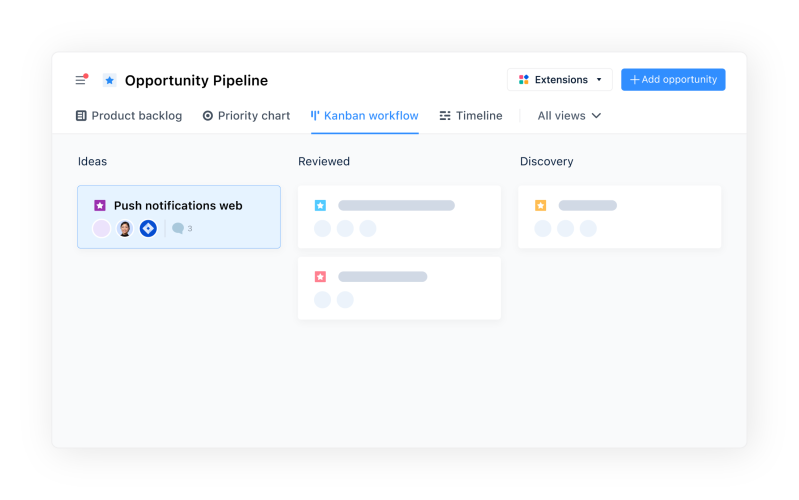
“If it’s your job to eat a frog, it’s best to do it first thing in the morning. And if it’s your job to eat two frogs, it’s best to eat the biggest one first.” - Mark Twain, American writer.
In the above quote, “eating a frog” is an analogy used to describe the most difficult task at hand and the message is to get your most difficult task out of the way first so that you can focus on everything else with a clear head.

I have often asked junior product managers during hiring interviews to explain what they do to a distant uncle who still lives like it is the 90s i.e. gets his news from a daily dose of newspaper, does not carry a mobile phone, and carries a dictionary and a map wherever he goes.
In most cases, the dialogue goes like this:
Candidate: I develop software products.
Me: So, are you a coder?
Candidate: No, I tell the coders what to build.
Me: So, are you a designer?
Candidate: No, I make sure they work together and deliver everything.
Me: So, are you a project manager?
In the simplest of terms, I like to explain product management as prioritizing the most impactful opportunities that the team should work on.
Importance of task prioritization in product management
Task prioritization is an important aspect of product management that helps ensure that the team is working on the most valuable and important things at any given time. In product development, the term ‘task’ is often used as an umbrella term to refer to any piece of work that can fall into your plate including features, initiatives, opportunities, requests, support emails, and other items.
By prioritizing tasks, product managers can allocate resources effectively and use their team's time and energy better. It also helps product managers identify and remove bottlenecks and roadblocks that may prevent progress. In addition, task prioritization can help product managers communicate more effectively with their teams and stakeholders.
Product Strategy, at its core, is all about prioritization as well. In the real world, with finite resources, there is a limit to what you can do as a team. So for a product to succeed, choosing the right focus areas for your team becomes ever more challenging. All good product strategy frameworks, more or less, provide the means to prioritize those focus areas. The Blue Ocean Strategy model picks the focus areas by prioritizing the product’s strengths vs the competition. Gibson Biddle’s DHM strategy model prioritizes focusing on the most delightful, hard-to-copy, and margin-enhancing initiatives. And many more.
By identifying and prioritizing tasks, product managers can provide a clear roadmap for their team, which can help everyone stay focused and aligned on the most important work.
Effective task prioritization can also help product managers anticipate and mitigate potential risks and challenges. By identifying the most important tasks and addressing them first, product managers can reduce the risk of delays or setbacks that could impact the overall development process.

Task prioritization techniques
There are several techniques that product managers use to prioritize tasks. On a high level, these can be grouped into three categories:
Effort based
Effort-based task prioritization is a method of organizing and prioritizing tasks based on the amount of effort required to complete them. This method ranks tasks based on the amount of time, energy, and resources needed to complete them.
These are often the tasks that add a lot of overhead by staying in the backlog (and everyone’s mind). Therefore, by focusing on these ‘low-hanging fruit’ tasks first, product managers can declutter their product backlogs, make quick progress, and build momentum, which can help motivate and engage their team.
Impact based
“For many outcomes, roughly 80% of consequences come from 20% of causes.” - Pareto’s principle
In one interpretation of Pareto's principle, it is stated that 80% impact is achieved through 20% of initiatives. This makes finding those 20% impactful initiatives ever more important.
In product terms, the impact of an initiative can be measured in several different ways:
Product/Market Insight – During the discovery stage of the product life-cycle, teams are often faced with a large amount of ambiguity (both in product and market) that needs to be addressed before anything else can happen. In such cases, it makes the most sense to prioritize the tasks that can reduce that risk the most, and provide you with the insights to shape your strategy for the long run.
Customer satisfaction – When a high-paying customer requests a feature or reports a problem, there is a sudden increase in interest from the top (yes, especially the CFO who normally doesn’t care what you are up to!) and it is usually the first thing that the CEO enquires about in the weekly update. Such tasks, piggybacking on the customer’s influence, tend to get automatically prioritized across all teams.
Risk reduction – Prioritizing technical debt can be a daunting challenge for most product teams. This is mainly because most prioritization frameworks are biased towards customer-facing value or impact and many teams fail to make that connection with technical debt. In the long run, when left unaddressed, technical debt can return as a much bigger problem. Therefore, reducing that long-term risk promptly is highly recommended.

One of the most common task prioritization frameworks used here is called MoSCoW. It groups tasks into Must Haves, Should Haves, Could Haves, and Won’t Haves categories, based on their impact. Kano Model is another model where product roadmap tasks are prioritized based on the ‘satisfaction’ they would bring to the customers. The Eisenhower Prioritization Matrix calculates task impact using its ‘importance’ in conjunction with its ‘urgency’ and prioritizes based on that.
Hybrid (impact vs effort)
This is the most popular category of all where teams prioritize tasks by mapping them onto the task prioritization matrix of Impact vs Effort (also known as the Action Priority matrix), where they try to prioritize the tasks that create the most impact with minimal effort.
One of the most popular hybrid techniques is RICE, which calculates a numeric prioritization score using Reach x Impact x Confidence / Effort = RICE score.
Challenges in task prioritization
Despite having a number of prioritization frameworks at their disposal, product managers still run into challenges when it comes to communicating the team’s value optimization to the top leadership. This naturally leads to more involvement from the top stakeholders in the day-to-day decision-making process.
In this situation, having a central system where all tasks are prioritized transparently in collaboration with the relevant stakeholders can be even more important than choosing a prioritization method. The key is to create a consolidated view that can serve as a single source of truth for everyone and should have input from all the teams.

One of the biggest mistakes that teams often make is maintaining separate task backlogs for each department. Sales, Marketing, Customer Support, Product, and Development teams each have their own separate systems and the prioritization happens in isolation by each team. In an effort to appease all teams and avoid arguments, the product manager tends to pick top 3 from each bucket and blend them together to create a roadmap, which is less of a product roadmap and more of an incoherent feature-factory.
Having unclear product strategy or objectives can also make it difficult for a PM to prioritize tasks because it can become hard to determine which tasks are the most important or relevant to the overall goals of the team. Without clear objectives, it can be difficult to gauge the potential impact of different tasks and to determine which tasks should be given the highest priority. This can lead to confusion and inefficiency, as the manager may find themselves spending time on tasks that are not aligned with the organization's goals.
With a clear product strategy and a central system to visually demonstrate the prioritization approach, product managers can learn to say "No" more effectively and keep their teams focused.
Eager to try out the task prioritization techniques for your team? Pick from our repository of widely used, predefined prioritization templates.

Sami Rehman

Read also






Prioritize with confidence

Experience the new way of doing product management




